Photos: 7-Year-Old Boy Discovers T. Rex Cousin
The newfound dinosaur species Chilesaurus diegosuarezi may be a cousin of the notorious Tyrannosaurus rex, but it didn't eat meat, a new study shows. Instead, C. diegosuarezi grazed on plants, according to a study of its leaf-shaped teeth. Chilesaurus has other characteristics of an herbivorous dinosaur, and shows paleontologists the ways dinosaur skeletons changed when the animals started eating plants, researchers say. [Read the full story on Chilesaurus diegosuarezi]
Chilean dino
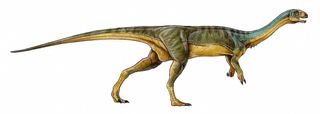
This dinosaur may be a theropod, a type of dinosaur that ate primarily meat, but C. diegosuarezi ate plants, researchers found. Its long neck may have helped it forage for vegetation, and its large feet likely helped support its weight. (Image credit: Gabriel Lío)
Herbivorous theropod
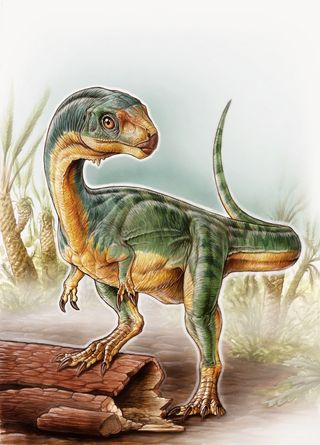
Chilesaurus diegosuarezi walked on its hind legs as other theropods did. It also had robust forelimbs that looked like those of other Jurassic theropods, such as the Allosaurus, the researchers said. However, its two fingers are blunt, unlike the sharp ones of its theropod cousin Velociraptor. (Image credit: Gabriel Lío)
Looking around
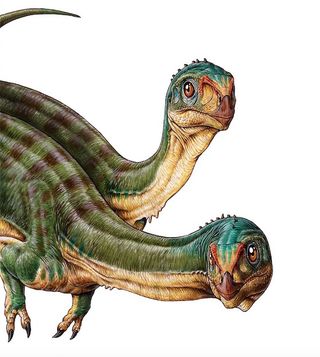
A 7-year-old boy discovered a few fossilized vertebrae of C. diegosuarezi in southern Chile in 2010 during a geology expedition with his parents. The Chilean scientists reached out to paleontologists in Argentina, and together, they found dozens of C. diegosuarezi bones, including four complete specimens.
Sign up for the Live Science daily newsletter now
Get the world’s most fascinating discoveries delivered straight to your inbox.
The newfound species is so odd that, if it weren't for the complete specimens, "Chilesaurus would be too bizarre to take seriously," said Thomas Carr, an associate professor of biology at Carthage College in Wisconsin and a vertebrate paleontologist who was not involved in the study. (Image credit: Gabriel Lío)
X-ray view
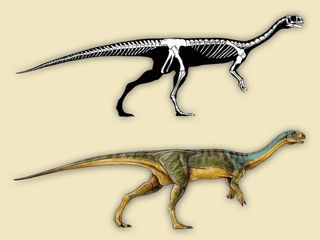
Chilesaurus diegosuarezi has characteristics of three different dinosaur groups. Its pubic bone points backward like that of an ornithischian dinosaur, perhaps because it provided the gut more surface area with which to digest plant matter, the researchers said. In most carnivorous dinosaurs, the pubic bone points downward or slightly forward, Carr said. (Image credit: Gabriel Lío)
Treasure map

Researchers excavated the Chilesaurus diegosuarezi remains in the Aysén (also spelled Aisén) region of Southern Chile. (Image credit: Fernando Novas)
Dino chompers

Dental fossils show that Chilesaurus diegosuarezi did not have sharp, bladed teeth as its relative T. rex did. Here is a side view of its right jaw and teeth. (Photo credit: Fernando Novas)
Dinosaur discoverer
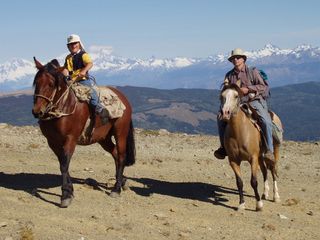
Geologist Manuel Suárez (right) and his son Diego (left), who found Chilesaurus when he was just 7 years old. (Photo credit: Fernando Novas)
Rocky excavation
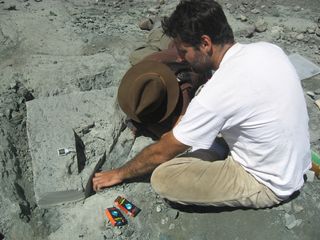
An excavation of the dinosaur skeleton beds in the Toqui Formation in the southern Andes in Chile. (Photo credit: Fernando Novas)
Hard work
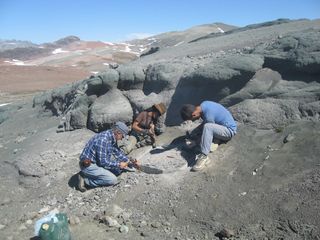
A team digs up the skeleton beds in southern Chile. In addition to the Chilesaurus remains, researchers found crocodyliforms (crocodile ancestors) and fragmentary remains of sauropod dinosaurs (diplodocids and titanosaurians), the researchers said. (Photo credit: Fernando Novas)
Dino dig

At first glance, C. diegosuarezi looks like a perplexing mix of different dinosaurs. But "I think what we're really seeing are the expression of limited options that dinosaurs have when they're herbivores," Carr said. "When you take a meat-eating body and you evolve it into an herbivore, there's only so many options that are available." (Image credit: Fernando Novas)
Follow Laura Geggel on Twitter @LauraGeggel. Follow Live Science @livescience, Facebook & Google+.

Laura is the archaeology and Life's Little Mysteries editor at Live Science. She also reports on general science, including paleontology. Her work has appeared in The New York Times, Scholastic, Popular Science and Spectrum, a site on autism research. She has won multiple awards from the Society of Professional Journalists and the Washington Newspaper Publishers Association for her reporting at a weekly newspaper near Seattle. Laura holds a bachelor's degree in English literature and psychology from Washington University in St. Louis and a master's degree in science writing from NYU.











